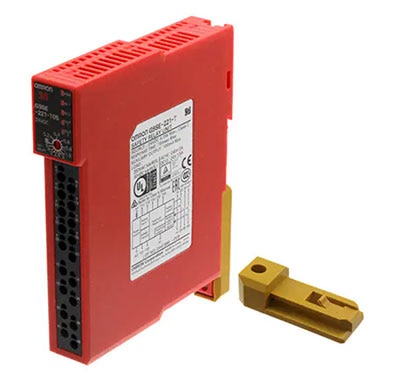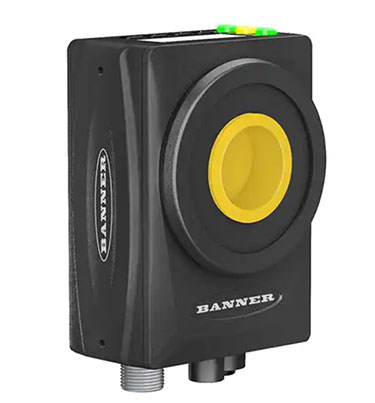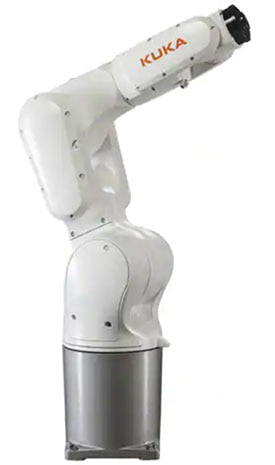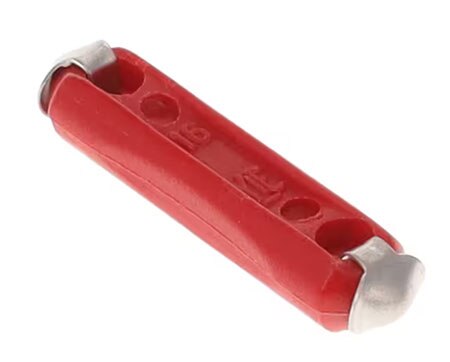With One Stop, Designers Can Create the Future of Automation, Agriculture, and Transportation
The advancement of civilization has largely been enabled by our ability to manipulate materials, establish agricultural practices, and facilitate ease of movement and migration. What started as simple tool-making has evolved into ultra-scale manufacturing. Agriculture has become the science of maximizing yield per hectare. And the lowly automobile is at the technological forefront of a global push toward electric vehicles (EVs) with their associated efficiency optimization requirements.
All three have much in common, including the need for higher levels of automation and control to maintain their accelerated pace of production in the face of ever-increasing cost and efficiency pressures, as well as the need for improved safety. Safety is particularly important in automotive manufacturing, where humans and machines work side by side, as well as in agriculture, where autonomous vehicles are improving productivity but need safeguards to prevent accidents in the field.
Achieving these goals requires the incorporation of innovative approaches to automation & control and efficiency, including sensors, relays, controllers, cameras, energy meters, and chargers that have been specifically designed to meet the needs of these applications. For designers, finding and sourcing the appropriate solutions can be challenging. Fortunately, much of that work has already been done by DigiKey. Let’s take a look at some of these solutions for next-generation designs.
Automotive manufacturing safety
Safety in automotive manufacturing is critical. While state-of-the-art concepts in the Industrial Internet of Things (IIoT) are being incorporated to enhance productivity, humans must still work next to heaving machinery and with collaborative robots (cobots) at various stages along the production line. Their safety must be assured. But rest easy; DigiKey has you covered with a wide range of safety products, including relays, controllers, and more.
A safety relay (Figure 1) helps execute the safe stoppage of a system’s movement in a controlled power down. It is typically called into action when sensors monitoring the equipment detect when workers or operating personnel may be in danger, or when a worker manually activates an emergency stop button.
DigiKey not only offers a wide variety of safety relay solutions, those solutions are also developed by leading manufacturers in the space, including the likes of Omron, Banner Engineering, Littelfuse, Altech Corp., Panasonic, Phoenix Contact, SICK, TE Connectivity, and Weidmuller.
 Figure 1: Safety relays such as the G9SE-221-T30 that perform emergency stop functions can be used to ensure worker safety in automotive manufacturing environments. (Image source: Omron Automation and Safety)
Figure 1: Safety relays such as the G9SE-221-T30 that perform emergency stop functions can be used to ensure worker safety in automotive manufacturing environments. (Image source: Omron Automation and Safety)
Safety controllers ensure the safe productivity of stationary and mobile machines. Usually, they are programmable logic controllers (PLCs) with special design elements at their inputs, within their internal processing, and at their outputs to guarantee the required level of safety when used in safety-critical systems. DigiKey hosts an array of controllers for this purpose, including solutions from Banner Engineering, IDEC, Omron, Panasonic, and Schneider Electric. A guide to DigiKey’s complete automation & control safety portfolio with light curtains, door interlocks, and pull switches, to mention just a few items, is available here.
An autonomous agricultural future
An expanding global population, combined with the decreasing availability of manual labor in many western countries as populations age, has created a pull for more use of autonomous vehicles in agriculture. Highly integrated with IoT systems designed to monitor the environment and plant growth to achieve maximum yield per hectare, these vehicles drive innovation and maximize productivity. At the same time, they exist side by side with workers, so they must incorporate measures to ensure safety.
To safely interact with their environment, autonomous agricultural vehicles must recognize the agricultural products and tasks to be processed, have flexible arms with multiple degrees of motion, and be able to pick and move produce without damage. They must also be able to detect human presence, avoid obstacles, and navigate accurately and safely. Sensors and machine vision systems are, therefore, one of the many key components that enable autonomous systems. These sensors include those needed to detect touch and various levels of applied force, as well as proximity, position, orientation, temperature, sound, and light.
To assist you in the design and implementation of a vehicle that meets these application requirements, DigiKey provides a collection of essential devices you need, including cameras, sensors, control arms, switches, actuators, safety devices, and more.
For example, a key enabler of autonomy is machine vision, which allows systems to see the environment in which they work and the items they have to process. Machine vision solutions available from DigiKey cover cameras (Figure 2), lighting systems, lenses, and control processing units. Fifteen lines are currently available across its portfolio, including selections from suppliers ranging from Banner Engineering to ifm Efector and others.
 Figure 2: Machine vision systems, such as the VE201G1A smart camera, can be added to heavy autonomous agricultural equipment to enable produce handling and processing, navigation, and safety. (Image source: Banner Engineering)
Figure 2: Machine vision systems, such as the VE201G1A smart camera, can be added to heavy autonomous agricultural equipment to enable produce handling and processing, navigation, and safety. (Image source: Banner Engineering)
To allow autonomous vehicles to execute tasks, designers can select from a range of robotic solutions, including robotic arms (Figure 3), end effectors, and accessories. Included in DigiKey’s line card are solutions from Denso Robotics, Festo, and KUKA Robotics.
 Figure 3: The addition of a robotic arm, such as the KR 6 R900-2, could allow autonomous agricultural vehicles to execute precise and repetitive tasks in the field. (Image source: KUKA Robotics Corporation)
Figure 3: The addition of a robotic arm, such as the KR 6 R900-2, could allow autonomous agricultural vehicles to execute precise and repetitive tasks in the field. (Image source: KUKA Robotics Corporation)
Electric vehicles driving sensor and efficiency innovation
The migration to more energy-efficient transportation systems has pushed EVs to the forefront of innovation in sensing and control, as well as power delivery, storage, and management. DigiKey's automation and controls portfolio is ready to enable innovation in this next generation of smart, power-sipping vehicles. The product offering has expanded to include automotive sensors, controls, energy meters, and even EV chargers to help you solve challenges in designing tomorrow's car.
The heart of all EVs is the battery. The "brain" of the battery is the battery management system (BMS), which monitors the state of the battery and regulates charging processes and performance during operation. Control and monitoring are accomplished by sensors, while system and user safety are addressed by components such as circuit breakers and fuses (Figure 4). All must be automotive qualified, such as those from suppliers like Eaton and Littelfuse.
 Figure 4: Automotive-qualified fuses, like the OGBC016.H, are one of the many critical elements of an EV charging solution. (Image source: Littelfuse)
Figure 4: Automotive-qualified fuses, like the OGBC016.H, are one of the many critical elements of an EV charging solution. (Image source: Littelfuse)
Conclusion
Moving toward greater automation, autonomy, and efficiency, designers involved in the rapid evolution of automotive manufacturing facilities, autonomous agricultural vehicles, and EVs, must also be vigilant about worker safety. At the same time, they must manage design cycles, sourcing, and associated delivery requirements. By partnering with DigiKey as an international broad-line distributor, they can be assured of a comprehensive line of solutions in their Automation & Control product portfolio that can meet the requirements of their next-generation systems.

Have questions or comments? Continue the conversation on TechForum, DigiKey's online community and technical resource.
Visit TechForum










